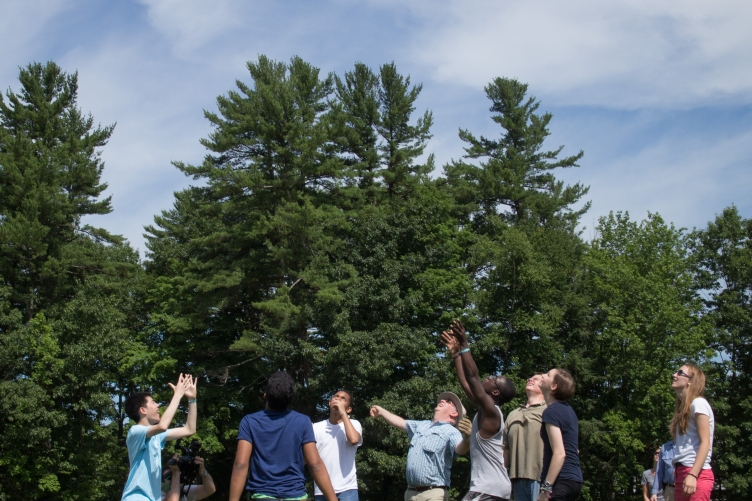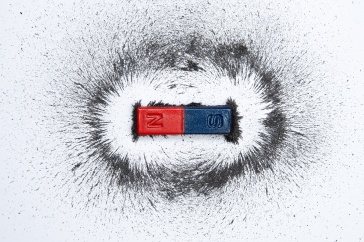
High-school students in the Project SMART program at UNH launch a high-altitude balloon into the atmosphere.

They found it at the edge of a Maine forest near a cornfield off a path called Potato Road. A distinctive orange hull, intact. Before it fell to the ground, it traveled along the jet stream for about 100 miles, taking photos and video and gathering atmospheric data.
It is the octagonal flight vehicle for a high-altitude balloon—a concave structure full of gauges, counters, meters, batteries, computers and other micro-components—that touched down after the balloon reached its maximum altitude and burst. They are the tenth and eleventh graders who constructed and launched the vehicle.
You read that correctly.
Tenth and eleventh grade students spent three weeks putting physics to work in University of New Hampshire laboratories before sending the balloon and its payload 97,000 feet into the atmosphere on July 17. The students came to UNH for Project SMART (Science and Mathematics Achievement through Research Training), a four-week science intensive for high-schoolers who dig learning and want to spend their summer doing just that while living and dining on a college campus. Fifty-one students from as far away as Greece and Jordan and as nearby as Hampton, N.H., made up this year’s class. They’ll get four college credits for participating.
The balloon build and launch was the team element of Project SMART’s space science module. The program has two other immersion areas—biotechnology and nanotechnology and marine and environmental science.
UNH Research Professor Charles Smith has been involved with Project SMART for a decade and has headed up the space science module since 2006. He works with UNH faculty, graduate and undergraduate students as well as science educators from three New Hampshire high schools—Timberlane, Coe-Brown and Londonderry—to deliver the annual program.
Smith says the students built the payload components, including five that were new this year. “We flew two temperature gauges, a Geiger counter, a sun sensor and a prototype spectrometer to measure the relative intensity of infrared and ultraviolet light,” he says.

After launching the balloon from Boulder Field, the students filled two vans and took off for Maine, tracking the balloon’s location using GPS and monitoring the information it transmitted en route. At one point, they clocked the balloon’s speed at 130 miles per hour. After they recovered the payload, the students conducted a cursory analysis of the data and shared their findings in oral and visual presentations. This fall, Timberlane High School teacher Louis Broad will bring the data into his physics classroom where his students will analyze it in detail.
The launch location changed several times before launch day arrived due to an Atlantic storm that temporarily altered the local jet stream. Most years, the team launches the balloon from Vermont and the payload comes down some 15 miles from campus in Northwood. With the temporary shift in the jet stream—moving south to north rather than west to east—the group was able to launch right from campus.
Smith admits this skirting of the coast made him a bit nervous. “Flying so close to the Atlantic gives us very little margin for error,” he explains. “The balloon will pop when it decides to pop and may wind up in the ocean.”
In the end, however, the flight pattern was spot-on. “The prediction was that it would come down off Potato Road,” Smith says, “and that’s where we found it.” The payload was in a large raspberry patch, he notes, and the students ate their way to it.
Photos of balloon launch and payload recovery
Project SMART receives support from the UNH College of Life Sciences and Agriculture, the College of Engineering and Physical Sciences, the New Hampshire Space Grant Consortium, NH EPSCoR, the Liberty Mutual Foundation and several other private companies and foundations. Project SMART also partners with the Summer Search Organization, which sponsors the attendance of several students.
-
Written By:
Tracey Bentley | Communications and Public Affairs

















































